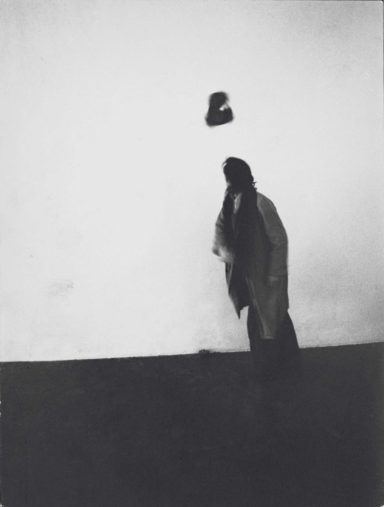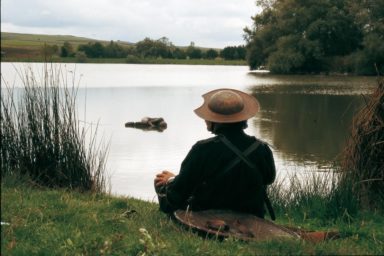A nomadic life riddled with misfortunes, deadly sins and dishonor… “Nel Segno del Caravaggio” is the new book by Stefano Zuffi presented at Palazzo della Permanente, which analyses the intricate story of this tormented genius of art
Text by: Fiammetta Cesana
On December 11, at the Milanese cultural institution, the art historian Zuffi gave a lecture on the most controversial Renaissance: Michelangelo Merisi da Caravaggio. A profoundly torn man, whose geniality, capable of such an eternal beauty, struggled for all his life between a long series of pains and sins. From several family mournings during his young age due to the plague that struck Milan in 1576, he had to deal with serious economic issues, social exclusion, and counts of murder, that made him a fugitive and the protagonist of a real Mediterranean Odyssey, till his miserable death on the shores of the Argentario in 1610.
The lecture, presenting Zuffi’s book about this incredible master of painting, accompanied the audiovisual exhibition “Caravaggio Oltre la Tela” (Caravaggio beyond the canvas) – designed by MondoMostre Skira – which immerses you into overwhelming images telling the whole story of the artist.
After moving to Caravaggio with the arrival of the plague, Merisi returned to Milan where at the age of 13 he began his apprenticeship at the studio of Simone Peterzano, painter of Lombard Mannerism. After a few years, then, he moved to Rome, as guest of Monsignor Pandolfo Pucci from Recanati – called Monsignor salad because of the only food he ate and offered to the artist. From here, it began his epic adventures across the eternal city, Naples, Sicily and Malta. Joining the Roman artistic environment, he gained the admiration of the cardinal Francesco Maria del Monte, man of culture and patron of the arts, who was fascinated by his works and bought, among others, the much famous opera “I bari”. Working at the service of the cardinal, Caravaggio paved the way for his boundless success. He obtained the first public commissions, from the paintings for the Cappella Contarelli, the “Vocazione” and the “Martirio”, to those for the Basilica of Santa Maria del Popolo, the “Crocifissione di San Pietro” and the “Conversione di San Paolo”. Owning a work by Caravaggio became a status symbol.
He established the foundations of modern painting: the artist first laid out a black background and then practiced on it with grooves, from which starting with the colors and introducing the brightness of light. In this technique all based on chiaroscuro, the representation of natural light plays a fundamental role, since it guides the observer’s eye towards the fulcrum of the scene without making its source visible – it is not necessary to draw a window to claim its presence. Thanks to the sublime ability to capture religious stories and moments of everyday life with realism, Caravaggio overcomes the artwork’s mono-sensory experience, extraordinarily succeeding in involving us into the scene. Some even define him the “first photographer”. In fact, we must forget the image – which has often been proposed – of Caravaggio painting directly on the street or in the bars; on the contrary he created real photo-shoot sets forcing his models to remain immovable for hours. He was not an idealist and couldn’t paint anything he wasn’t facing at. Also his still life was really innovative, though rare within his production; cardinal Del Monte commissioned him the “Canestra di frutta” which became a real masterpiece and given to cardinal Federico Borromeo – passionate of still life painting – who got much impressed by it. Caravaggio was very inspired by the great masters of the Lombard Renaissance, including Leonardo and Tiziano, and starting from these reference points he revolutionized the world of art, bringing the public to enter a new lively and surprisingly immersive artistic expressiveness.
His dark side, however, fueling a questionable lifestyle and a consequently public disdain, will never cease to smear him with infamies. Regular visitor of the most degrading neighborhoods in Rome, Caravaggio used to attend very famous prostitutes at the time, that he also used as models in his works to represent biblical figures, provoking inevitable scandals. He was always full of debts that made him forced to work non-stop in order to try to raise his finances. He couldn’t even pay the house rent and for this he was evicted by the landlady, Prudenzia Bruni. As if it wasn’t enough, his painting technique also suffered severe judgments, considered by some as a mere copy of that of Giorgione.
Furthermore, his passion for blood was not just an artistic motif, but it also reflected a real confrontation in the painter’s life. Often involved in violent fights, usually due to disputes for a woman, Caravaggio entered and left the prisons. But his problems with justice culminated with the murder of Ranuccio Tommasoni da Terni after a foul during a tennis match at Campo Marzio. It also seems that his arrival in Rome had occurred following an escape from Milan as he committed a murder. For the crime of Campo Marzio he was condemned to beheading and hence it started the pictorial obsession for severed heads, which often brought his self-portrait. It seems that the extraordinary ability to represent decease in such a vivid and real way, perfectly capturing that fleeting moment between life and death, was due to the fact that Caravaggio himself had witnessed various executions.
Forced to escape also from Rome, with the help of Prince Filippo I Colonna, the artist arrived in Naples where he finally lived a period of stability and flourishing artistic production. Thanks to the protection of the Carafa-Colonna family, here he obtained many commissions, including the one of “Madonna del Rosario”. He left for Malta in 1601 with the intention of entering the Sovereign Military Order of Malta to obtain the immunity. He met the grand master of San Giovanni, to whom he made a self-portrait, and, although for a very short time, he managed to achieve the coveted title. After a harsh quarrel with a senior knight, in fact, his charge was revoked, and Caravaggio was expelled from the order declared a “putrid and fetid” member, and was locked up in the prison of Sant’Angelo. The unstoppable Mediterranean Ulysses was able to escape incredibly and to reach Syracuse. Here he gained a strong interest in archeology, both Roman and Greek, and painted the “Seppellimento di Santa Lucia”, whose setting strongly reminds Latomie’s quarries. He then moved to Messina and Palermo, where he painted respectively the “Resurrezione di Lazzaro” and the “Natività con i Santi Lorenzo e Francesco D’Assisi”. Eventually he returned to Naples, again under the protection of the Colonna family, and here, left scarred by the hands of men of his Maltese rival, he dedicated himself to works such as “San Giovanni Battista disteso” and “Davide con la testa di Golia”.
When he heard that the Pope was preparing a revocation on his death sentence, he set off for Rome on a ferry. But at Palo di Ladispoli he was forced to disembark and was detained by the police, while his canvases – that would serve as the price for the ecclesiastical amnesty as established with cardinal Scipione Borghese – continued the route by sea. Released, this time thanks to the Orsini family, Caravaggio took over his last journey chasing his works, literally for matter of life and death. But once landed in Porto Ercole, now defenseless and afflicted by a serious illness, died only.
The oscure soul of Caravaggio led him to a sinful existence turning into a detested character. Nevertheless, his artistic legacy still lives today of an almost divine, ethereal beauty, and a unique purity that opens from its hidden light sources. A perfection that will not redeem him from his fatal mistakes but that consecrates the ineluctable torment of human genius.
Cover: Render “Giove, Nettuno e Plutone”, Gabinetto alchemico Casino Aurora, Palazzo della Permanente, Milan
“Caravaggio Oltre la Tela”
Palazzo della Permanente, Milan
From October 6, 2018 to January 27, 2019


